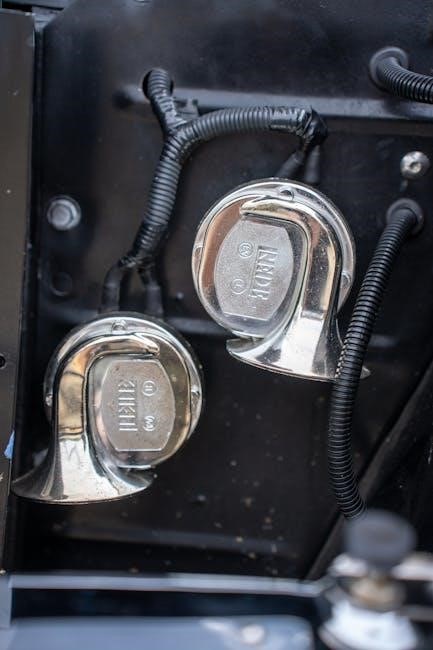Understanding Motor Nameplate Details
Motor nameplates provide crucial information, enabling installers and maintenance personnel to quickly understand a motor’s type and requirements. This understanding is vital for proper installation, operation, and maintenance, ensuring the motor functions within its defined parameters.

Purpose of Motor Nameplates
The primary purpose of motor nameplates is to provide a standardized, easily accessible source of essential information about the motor’s characteristics and operational limits. This information is crucial for several reasons, starting with proper selection. Choosing the correct motor for a specific application is paramount, and the nameplate details offer insight into performance capabilities.
During installation, the nameplate guides wiring connections, ensuring the motor is correctly integrated into the electrical system. For maintenance, the nameplate is invaluable for troubleshooting, repairs, or replacements. It allows technicians to quickly identify the motor’s specifications, aiding in finding compatible parts or suitable replacements.
Moreover, the nameplate helps in matching the motor with appropriate variable speed drives, optimizing performance, and energy efficiency. The nameplate also provides the motor’s basic mechanical design, electrical performance, and dimensional parameters. Ultimately, motor nameplates serve as a vital communication tool between manufacturers, installers, operators, and maintenance teams, facilitating efficient and safe motor operation.

Essential Information on Motor Nameplates
Motor nameplates contain vital data for understanding a motor’s capabilities. Key details include voltage, horsepower, amperage, and frame size. These specifications are crucial for proper installation, operation, maintenance, and ensuring compatibility with the intended application.
Motor Voltage and Frequency
The motor voltage and frequency are essential parameters displayed on the nameplate, indicating the electrical supply requirements for optimal performance. The voltage specifies the designed operating voltage, typically with a tolerance of +/- 10%, ensuring efficient operation. Other parameters, like power factor and current, are rated at this voltage.
Understanding these values is critical for proper wiring and connection, preventing damage and ensuring the motor functions as intended. Motors operate most efficiently at their rated voltage and frequency, as indicated on the nameplate. The frequency, measured in Hertz (Hz), specifies the alternating current frequency for optimal operation. Selecting the correct voltage and frequency is crucial for avoiding overheating, reduced performance, or premature failure. Always verify the power supply matches the motor’s specifications.
Horsepower (HP) or Kilowatts (kW) Rating
The horsepower (HP) or kilowatts (kW) rating on a motor nameplate indicates its mechanical power output capacity. This value represents the amount of work the motor can perform. Horsepower is the imperial unit, while kilowatts are the metric unit, both signifying the motor’s power.
This rating is essential for selecting the appropriate motor for a specific application. The HP or kW value helps determine if the motor can handle the required load. Matching the rating to the application prevents overloading, which can lead to overheating and premature failure. Understanding this value ensures the motor operates efficiently. It’s crucial to choose a motor with sufficient HP or kW to meet the demands of the driven equipment. Always consider the load requirements when selecting a motor based on its power rating, ensuring optimal performance and longevity.
Full-Load Amperage (FLA)
The Full-Load Amperage (FLA) displayed on a motor nameplate represents the amount of current the motor draws when operating at its rated horsepower (HP) or kilowatts (kW) and voltage, under full load conditions. This value is crucial for selecting the correct overcurrent protection devices, such as circuit breakers and fuses.
FLA is essential for ensuring the electrical system can safely handle the motor’s current draw. It is critical for preventing damage to the motor and the electrical wiring. The FLA value helps calculate the appropriate wire size and the proper size of the overload protection. It also aids in understanding the motor’s power consumption under normal operating conditions. Always refer to the FLA when determining the electrical requirements for motor installation and operation. This data is vital for maintaining safety and preventing electrical hazards related to motor operation and avoiding any damage.
NEMA Design Letter and Frame Size
The NEMA (National Electrical Manufacturers Association) Design Letter indicates the motor’s torque and current characteristics, providing insights into its starting and running performance. Common design letters include A, B, C, and D, each offering distinct speed-torque curves suitable for different applications. Design B is the most common, offering a balance of starting torque and current.
The Frame Size specifies the motor’s physical dimensions, particularly the mounting dimensions. It ensures interchangeability between motors from different manufacturers. The frame size is essential when replacing a motor, as it guarantees the new motor will fit the existing mounting arrangement. Understanding both the NEMA design letter and frame size is crucial for selecting the appropriate motor for a specific application and facilitating seamless replacements. This information ensures compatibility and optimal performance. These aspects are critical for designers.

Additional Motor Nameplate Information
Besides essential specifications, motor nameplates often contain supplementary data like service factor, insulation class, and efficiency. This additional information provides a deeper understanding of the motor’s capabilities, limitations, and overall performance characteristics, as well as potential applications of a motor.
Service Factor (SF)
The Service Factor (SF) indicated on the motor nameplate represents the permissible overload capacity the motor can handle under specific conditions. It’s a multiplier that, when applied to the rated horsepower, indicates the permissible horsepower loading. For instance, an SF of 1.15 means the motor can handle 15% more horsepower than its nameplate rating, but only for short durations.

This factor accounts for variations in voltage, ambient temperature, and load. Operating a motor continuously above its nameplate horsepower rating, even within the service factor, can significantly reduce its lifespan. The service factor provides some level of protection against unexpected load increases or voltage fluctuations.
Motors with higher service factors are generally more robust and better suited for applications where occasional overloads are anticipated. However, it is crucial to remember that the service factor is not intended for continuous operation at the overloaded condition. Always consult the manufacturer’s recommendations for specific application guidelines.
Insulation Class and Ambient Temperature
The insulation class and ambient temperature ratings are crucial parameters displayed on the motor nameplate, defining the motor’s thermal capabilities. The insulation class, designated by letters such as A, B, F, or H, indicates the maximum allowable operating temperature of the motor’s winding insulation. Higher class letters correspond to higher temperature tolerances.
Exceeding these temperature limits can lead to premature insulation degradation and motor failure. The ambient temperature rating specifies the maximum temperature of the surrounding air in which the motor can operate without exceeding its insulation class temperature limits.
For example, a motor with insulation class F and an ambient temperature rating of 40°C is designed to operate safely with a maximum winding temperature of 155°C, assuming the surrounding air is no hotter than 40°C. If the ambient temperature exceeds this value, the motor’s lifespan can be significantly reduced. Therefore, selecting a motor with appropriate insulation class and ambient temperature ratings is essential for ensuring reliable operation.
Efficiency and Power Factor
Efficiency and power factor are key performance indicators displayed on a motor nameplate, reflecting the motor’s ability to convert electrical energy into mechanical work effectively. Efficiency, typically expressed as a percentage, indicates the ratio of mechanical output power to electrical input power. A higher efficiency rating signifies less energy wasted as heat, resulting in lower operating costs and reduced environmental impact.
Power factor, a dimensionless value between 0 and 1, represents the phase difference between voltage and current. A power factor closer to 1 indicates a more efficient use of electrical power, minimizing reactive power and reducing the load on the electrical grid.
Motors with low power factor can lead to increased energy consumption and voltage drops, requiring utilities to impose penalties. Therefore, selecting motors with high efficiency and a power factor closer to unity is desirable for optimizing energy usage and reducing overall costs. Nameplate values are at rated voltage and frequency.

